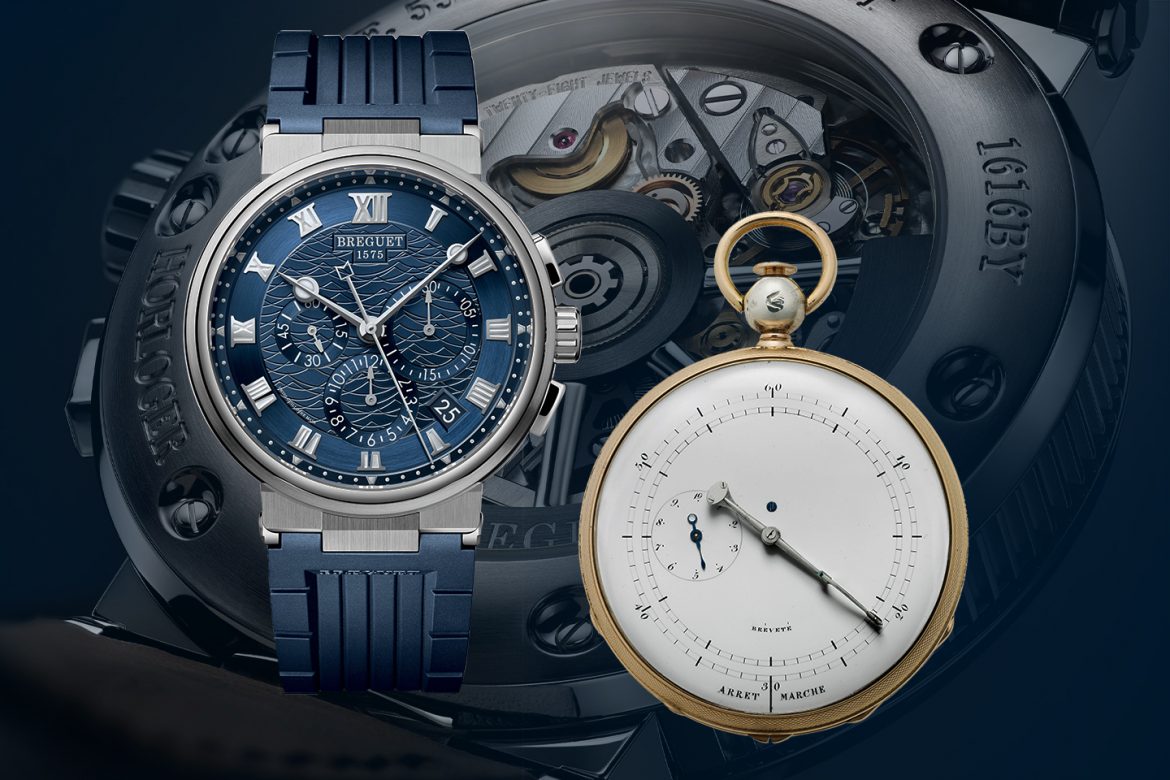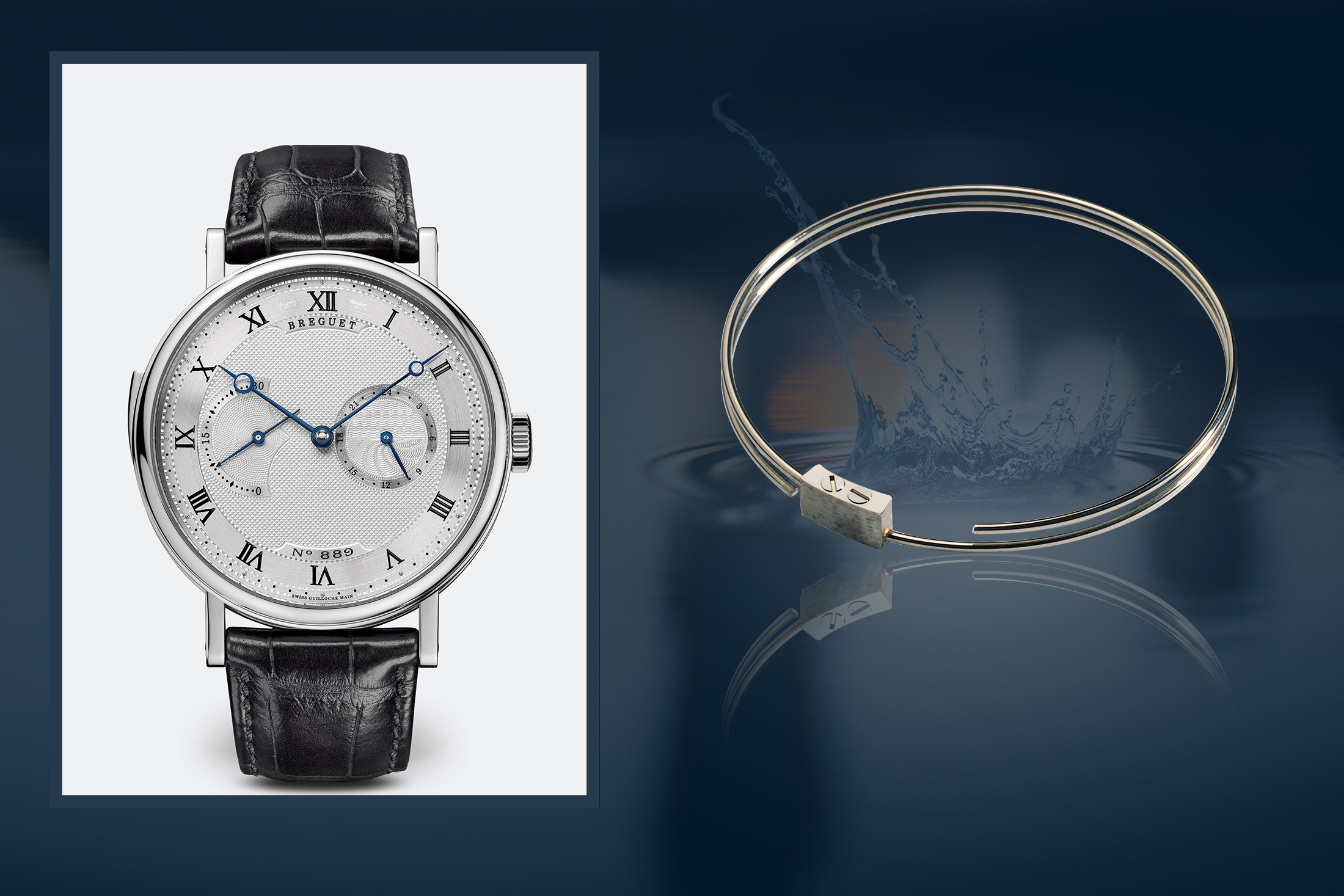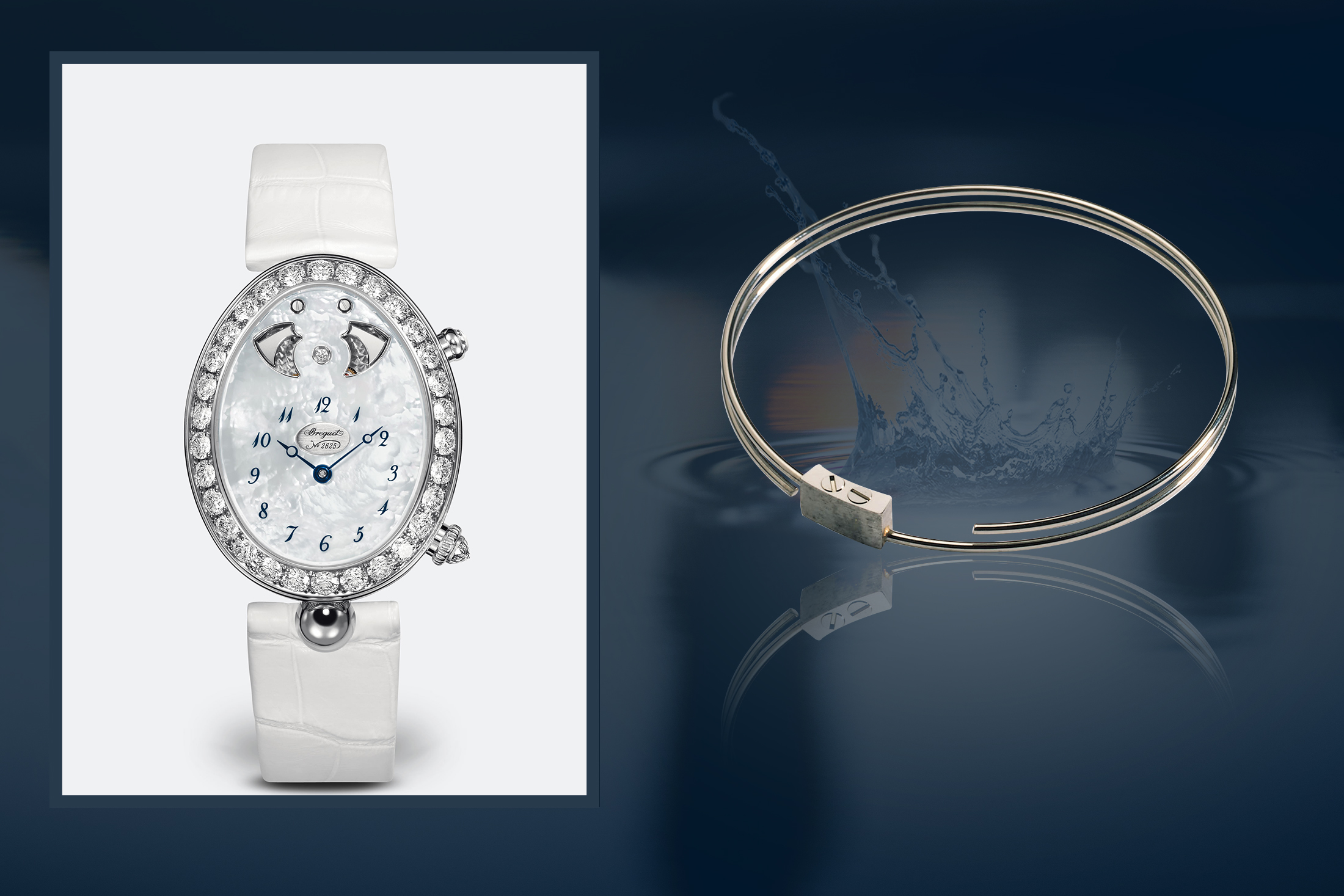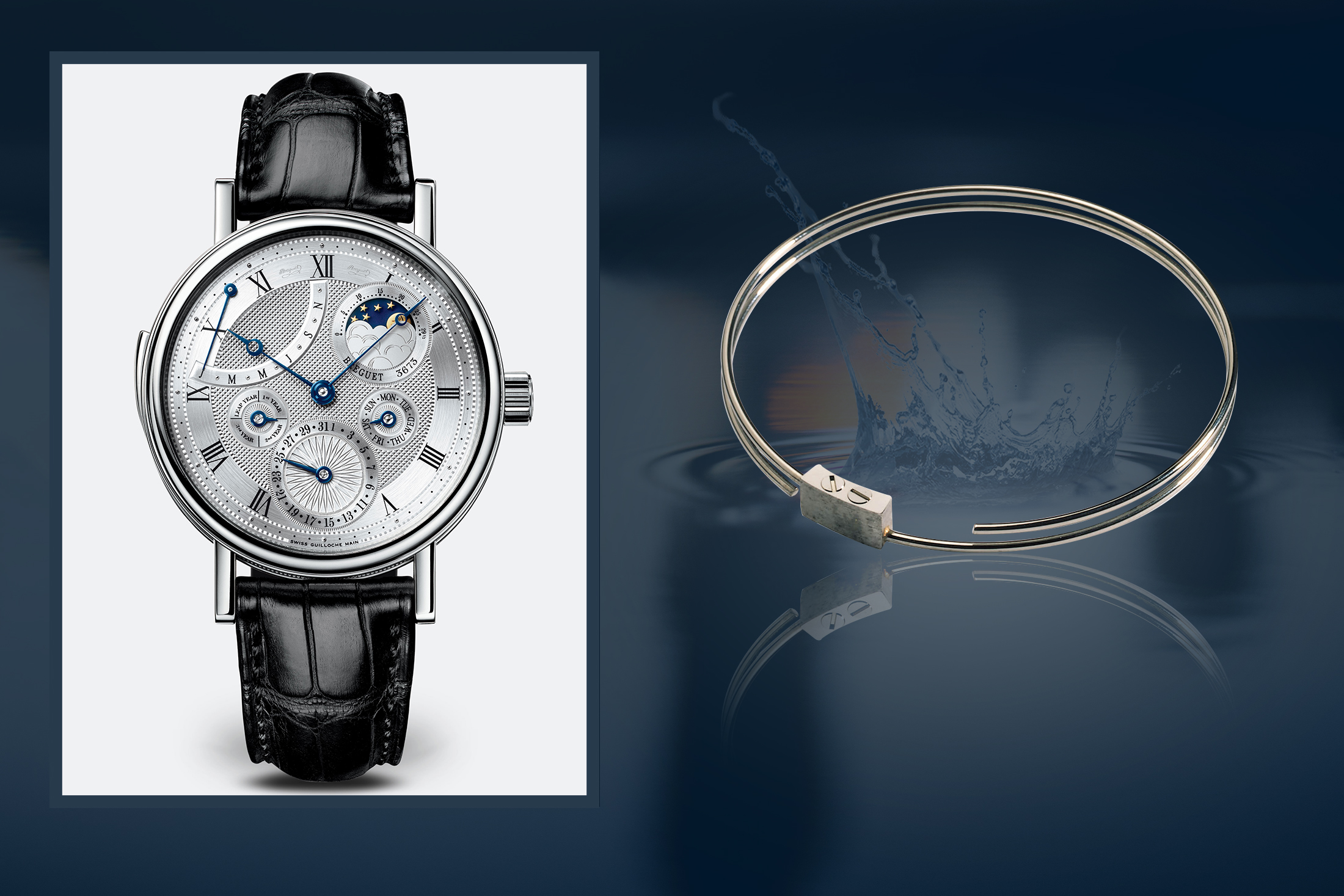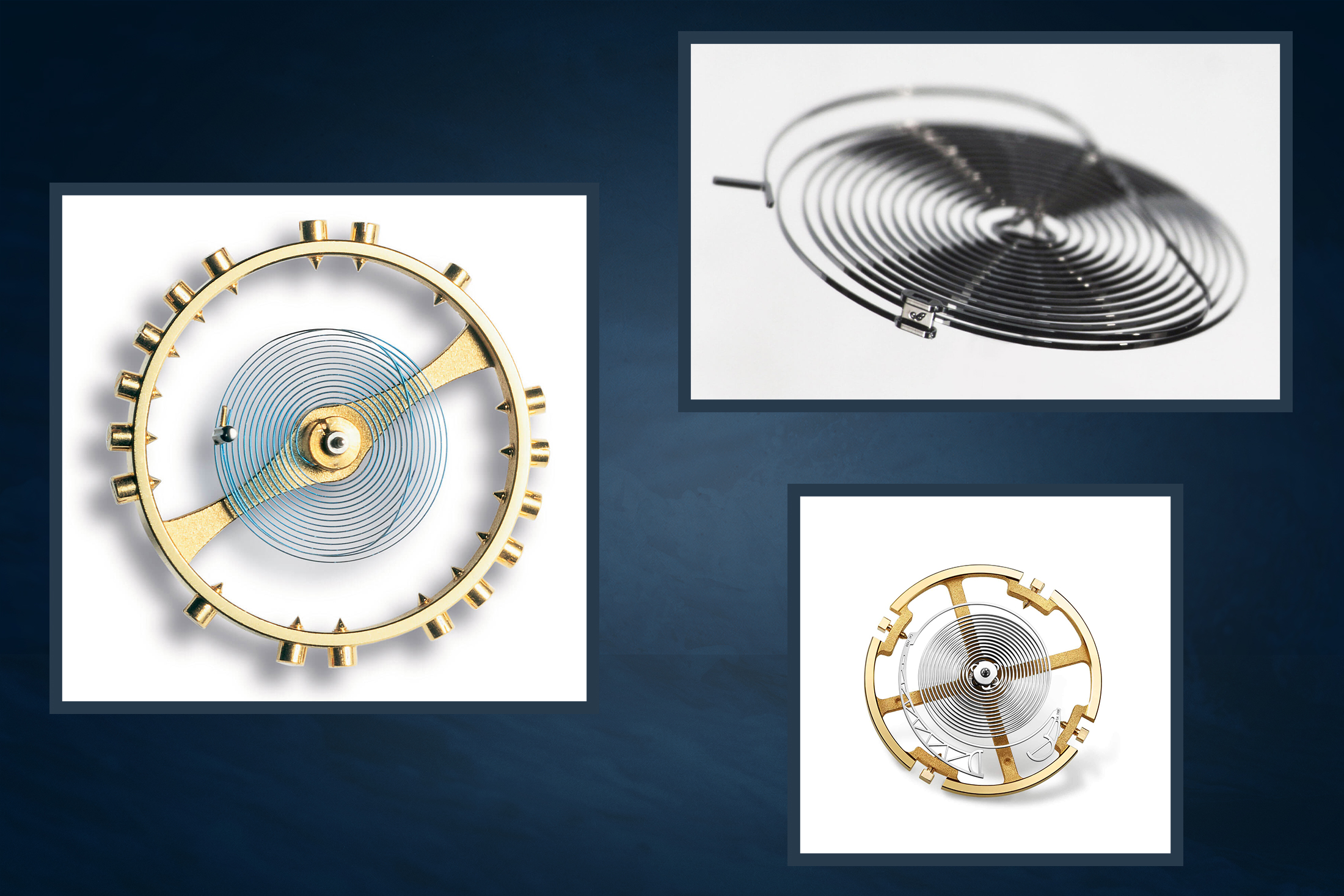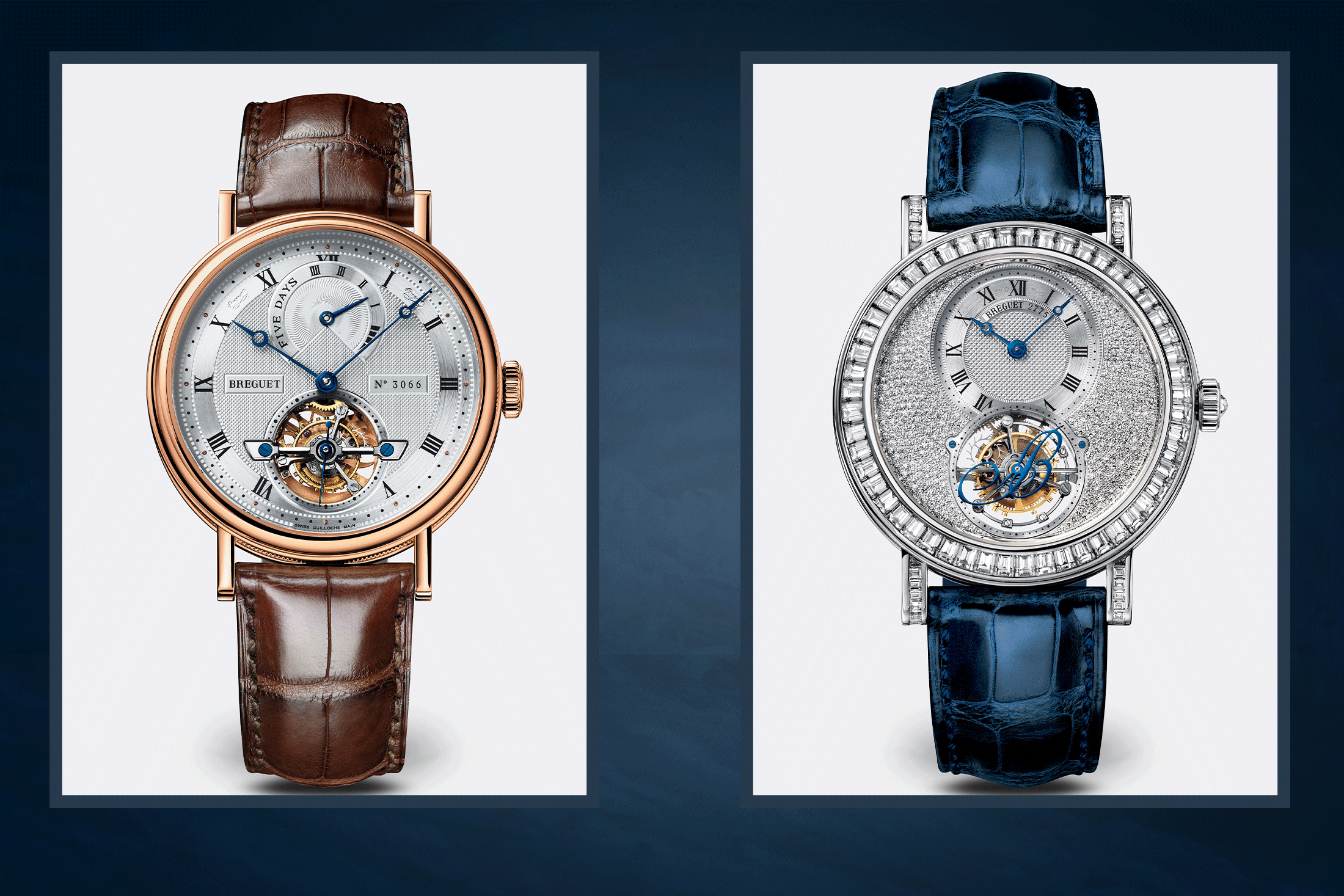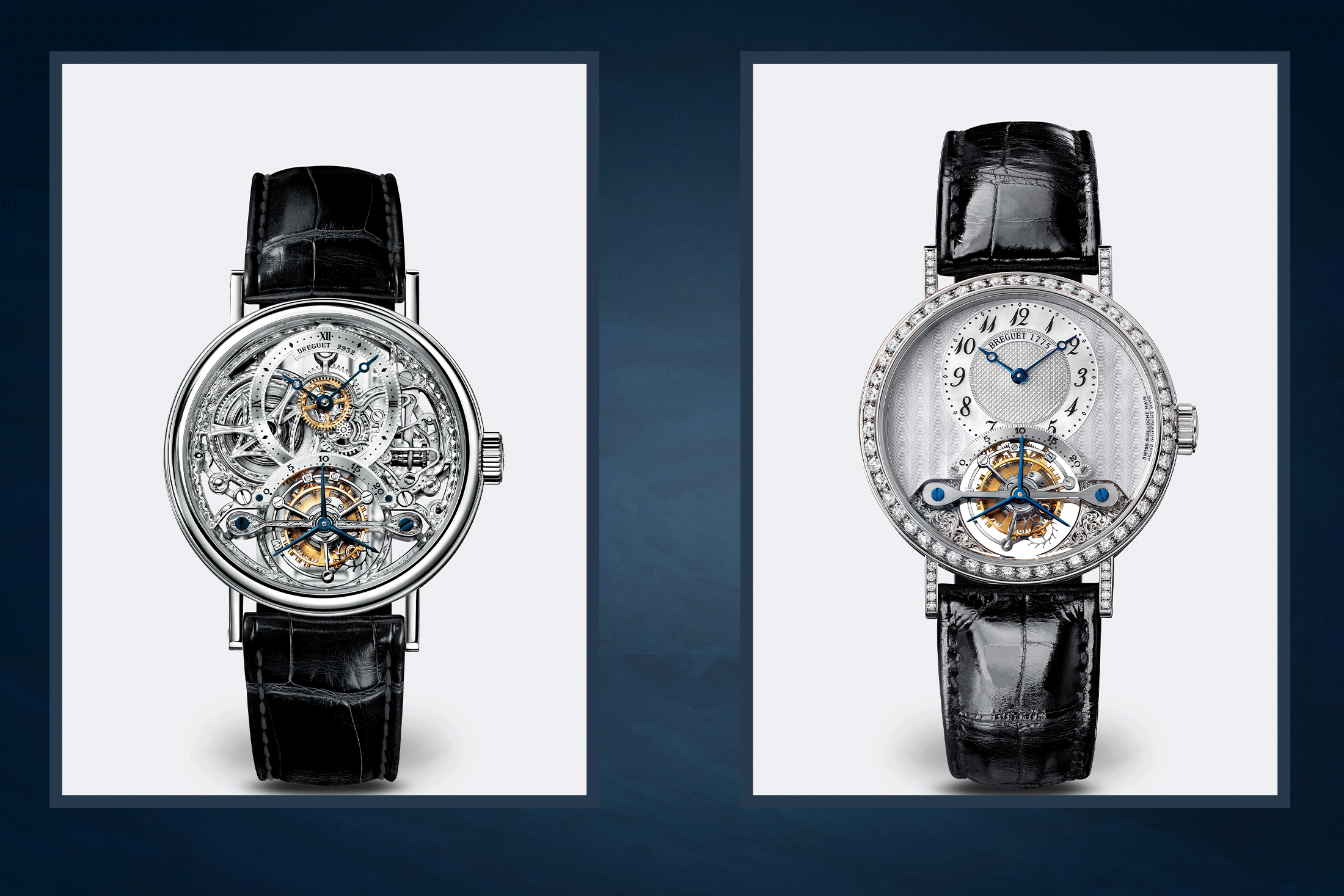Founded in 1775, Breguet is synonymous with horological quality, perfection and innovation.
Born in Neuchatel, Switzerland to Jonas-Louis Breguet and Suzanne-Marguerite Bollein, Abraham Breguet spent most of his life in Paris. His father passed away when he was only ten, and his mother remarried Joseph Tattet, who came from a family of watchmakers with a showroom in Paris. For years the Tattets tried unsuccessfully to encourage Abraham Breguet into the trade, but he eventually took to it with great interest at age 15. Abraham was then sent to be apprenticed to a master watchmaker in Versailles.
Being driven and motivated, Breguet also took classes in mathematics under Abbé Marie, who became his close friend and mentor. Through Abbé Marie’s connections, Breguet received various royal commissions. Unfortunate circumstances met with Abbé Marie, and he passed away. Tragedy struck again when Breguet’s parents also passed on, leaving Breguet to support himself and his sister.
After completing his apprenticeship, Breguet married Cécile Marie-Louise L’Huillier in 1775. The couple set up their home and the Breguet watchmaking company. The first known address of company was at 51, quai de l’Horloge in the Île de la Cité in Paris, and it was from this quiet and quaint town that the great legacy of Breguet began.
Here we highlight some of the brand’s milestones.
1780 – The “Perpetuelle Watch”
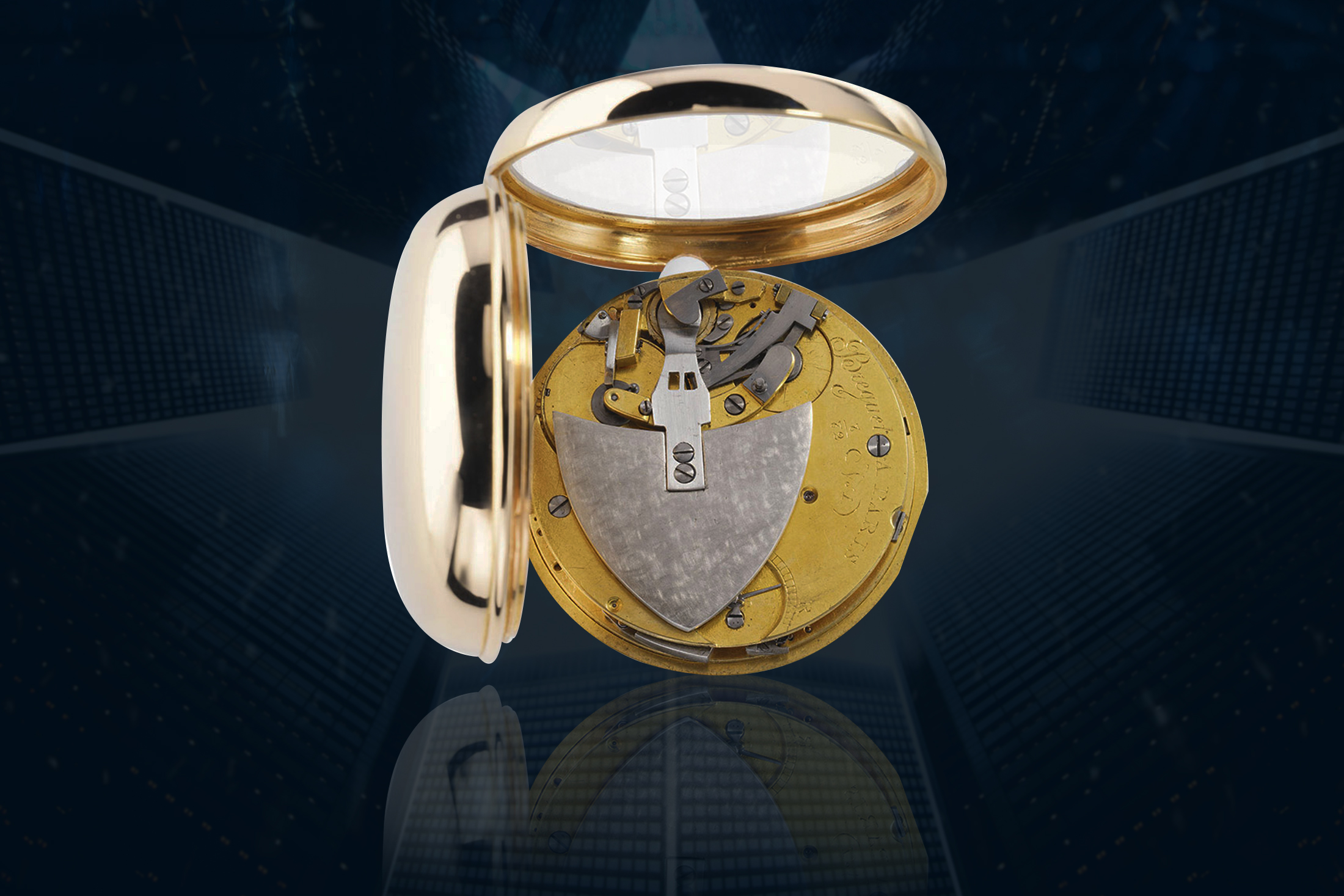
Abraham Louis Breguet ambitiously wanted to invent a watch that did not require manual winding by any key. He invented a system which had an oscillating weight that would rotate with the wearer’s daily activities like hand movement and walking. This first oscillating platinum weighted watch produced by Breguet is the first “self-winding” automatic watch ever invented.
1783 – The “Gong-Spring” Watch
Before the light bulb was invented in 1879, knowing the time in the dark was no simple feat. People relied on chiming watches, which were bulky and cumbersome with the inclusion of a bell within the timepiece. Breguet ingeniously invented a striking repeating watch, which, instead of a bell, used a gong spring coil that was coiled up around the movement itself, with hammers that could knock the gong for the chime. This reduced the thickness of the watch and also provided a more well-distributed, harmonious and pleasant tone. This progressed to more striking mechanisms for future repeater watches, such as quarters, half-quarters and minutes.
1785 – “The Equation of Time”

In the background (Model with this Invention): Marine Équation Marchante 5887. On the right: Breguet 3862 pocket watch.
The equation of time refers to the difference between the mean solar time (time based on the conventional 24 hour period) and the true solar time. This discrepancy is attributed to the tilt of the earth’s rotational axis at 23.44 degrees and the slight eccentric earth’s orbit around the sun. Breguet created fascinating timepieces that could indicate this equation of time.
1793 – The “Perpetual Calendar”
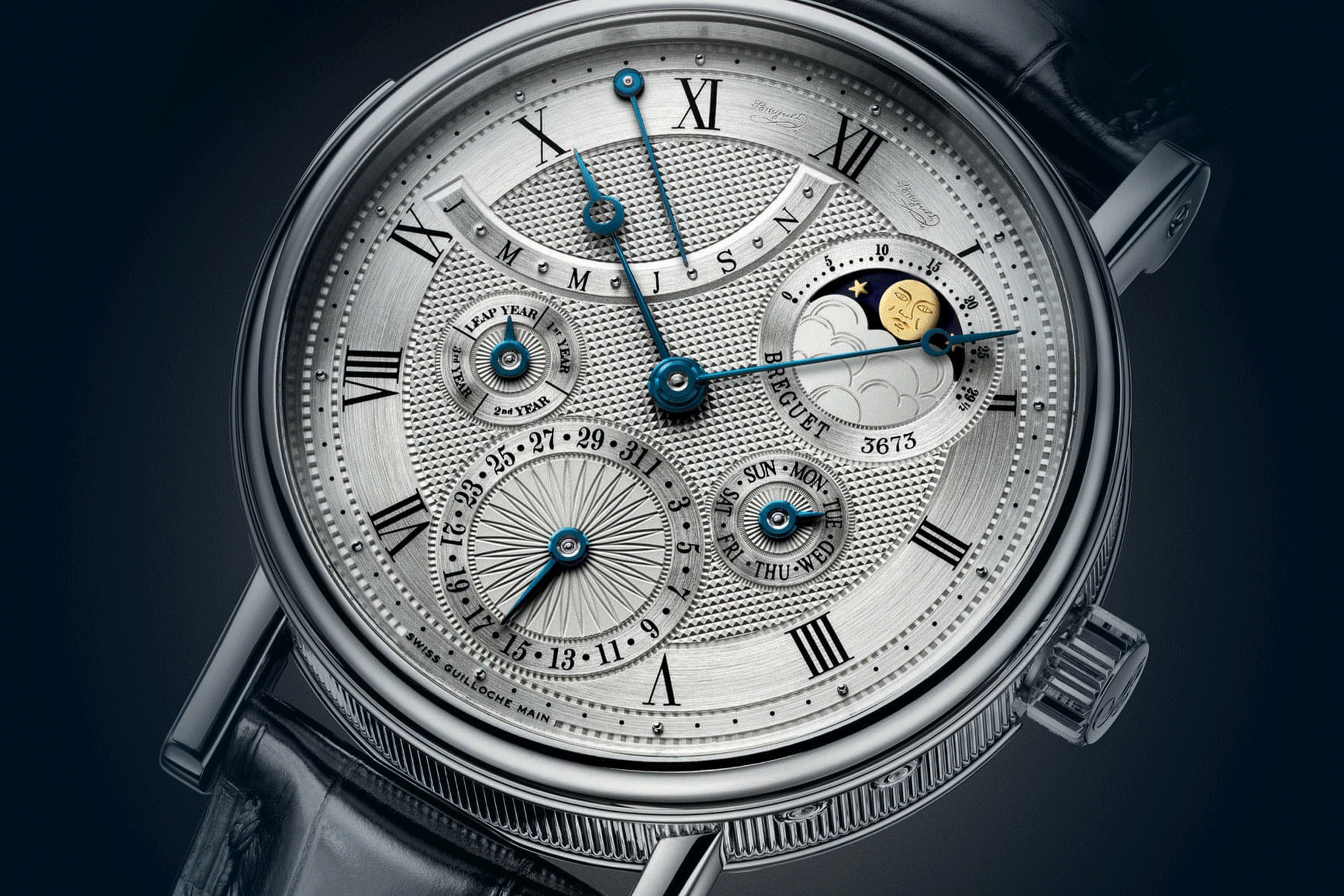
In the background (Model with this Invention): Classique Complications 5447. On the left: Breguet watch number 1369 Timepiece with complete Gregorian perpetual calendar & Breguet watch number 45 Two-style timepiece, Republican and Gregorian perpetual calendars.
Breguet introduced a complex timepiece with numerous intricate gears and wheels that could not only account for the short and long months in a year, but also the leap years as well. This was a huge innovative feat at that time.
1795 – The “Breguet Balance Spring”
The Dutch invented the first flat balance spring in 1675, which was made of copper or iron and a few coils. It was functional but had its flaws. Breguet innovatively modified this spring coil over the years by:
(a) adding an “over-coil” in the last coil of the spring, in order to allow the rest of the spring coil to develop concentrically;
(b) introducing a bimetallic compensation bar, in order to negate the changes of temperature on the spring coil;
(c) adding silicon to the balance spring and escapement, as the material is invulnerable to magnetic fields and resistant to corrosion and shocks (in 2006, more on this below);
(d) equipping the chronometer with twin 180 degrees symmetrically deploying balance springs, which improved precision, stabilised the oscillator, and added double the power to 830 microwatts.
1801 – The “Breguet Tourbillon”
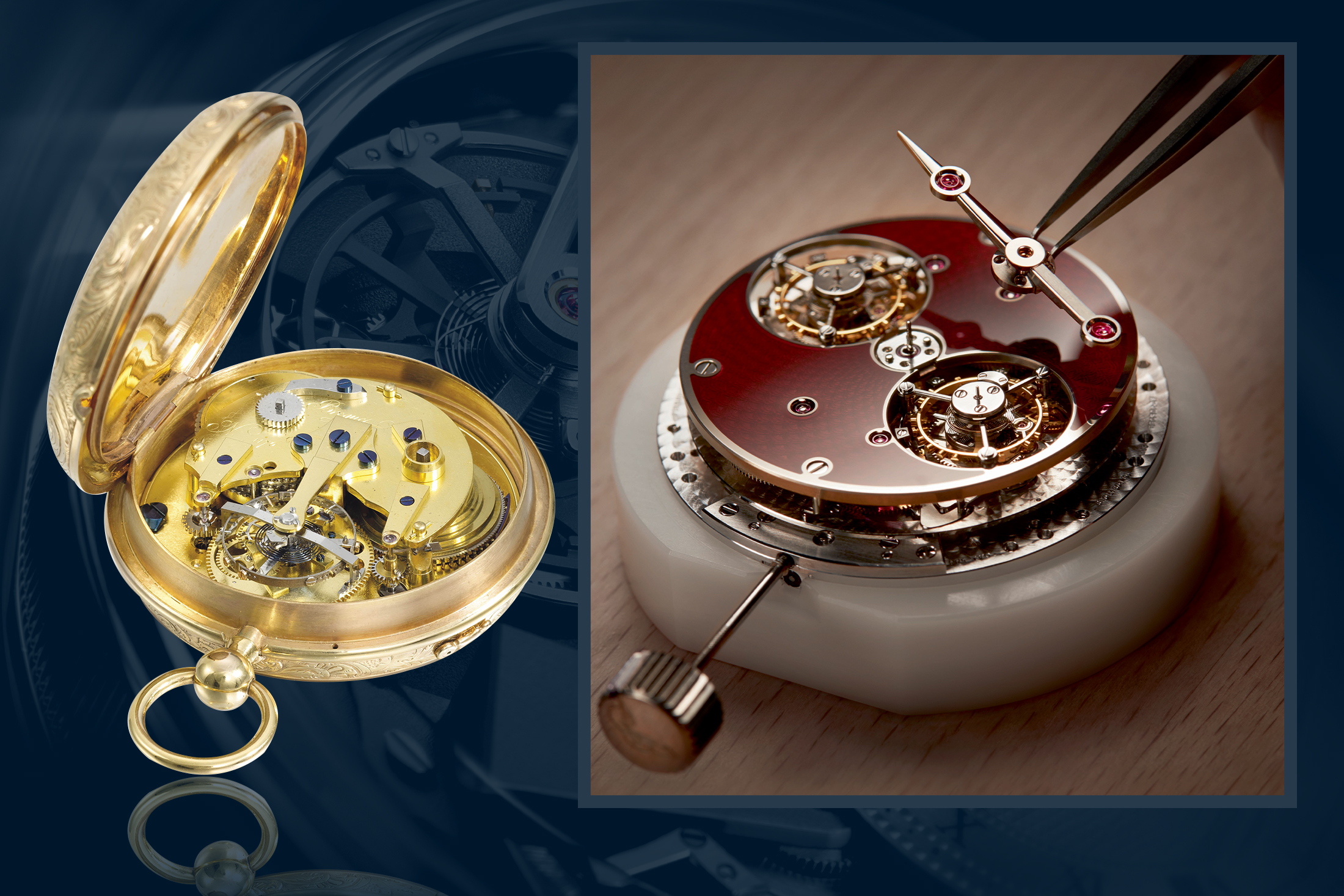
On the left: The First Tourbillons, 1801. On the right: Classique Double Tourbillon 5347.
When Isaac Newton discovered gravity in 1687, few would realise its effect on the timepiece till much later. Abraham-Louis Breguet’s fascination with accuracy led him to note the effects of gravity on the movement of the timepiece based on its position. (At that time, watches were usually placed in the vest-pocket of a gentleman’s suit vest.)
Breguet had a brilliant idea of creating the entire balance spring, lever, escape-wheel, and all the parts sensitive to gravity inside a mobile carriage that rotates 360 degrees per minute. This would negate the effects of gravity on the timepiece. Some call the Tourbillon a “whirlwind in a well”, and rightfully so, as its stunning visual effects is likely more appreciated than its actual gravity negating effects, now that timepiece is worn on the wrist which is constantly moving, and no longer in the vest-pocket.
1810 – The “Breguet First Wrist Watch”
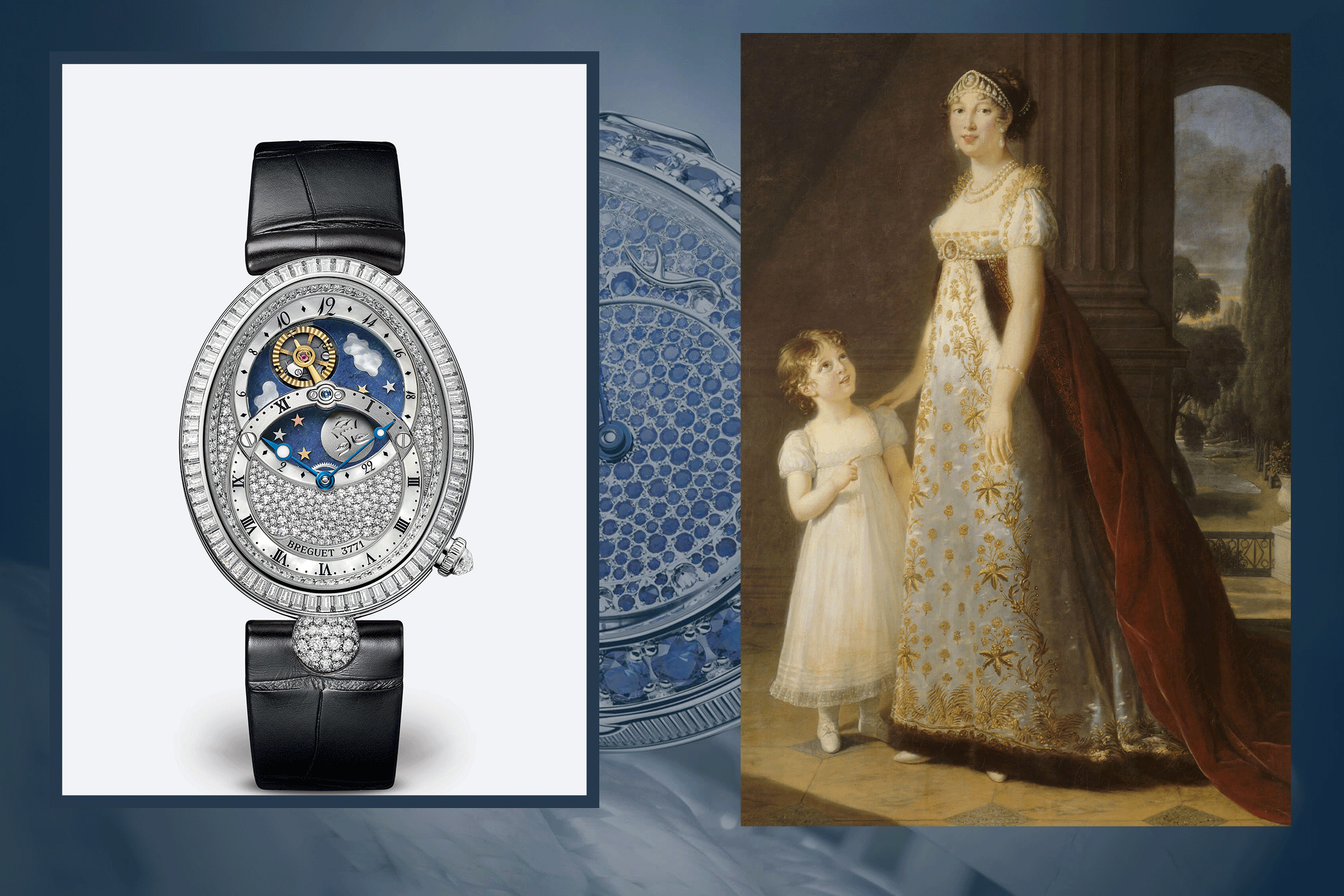
On the left: Reine de Naples 8999, 8907 & 8939. On the right: Portrait of the Queen of Naples.
The world’s first known wrist watch was made specially for Caroline Murat, Queen of Naples and youngest sister of Napoléon Bonaparte.
The Registers of Commissions, and Manufacturing pin the dates of commission to be 8 June 1810; production onset to be 11 August 1810, and completion to be 21 December 1812. A team of seventeen were involved in the manufacture of the timepiece. Based on the Registers, it was to be a:
- quarter repeater watch,
- with an oblong (oval) shape,
- featuring a Guilloché silver dial with Arabic numerals,
- bearing number No.2639, and
- “mounted on a wristlet of hair woven with gold thread, simple key”, with a “second wristlet, also woven with gold, in a red leather case”.
The Register of Repairs reaffirms the watch description on two occasions (in 1849 and 1855), and the last known owner (who sent the watch for repairs) to be Countess Rasponi, also known as Louise Murat, the fourth and last child of Joachim and Caroline Murat. Since the last sighting of the watch, where the “pivots were polished, thermometer reset, repeater restored to working order, dial overhauled, parts cleaned and watch adjusted”, it was never to be found, up to today.
1820 – The “Chronometer with Double Observation Seconds”
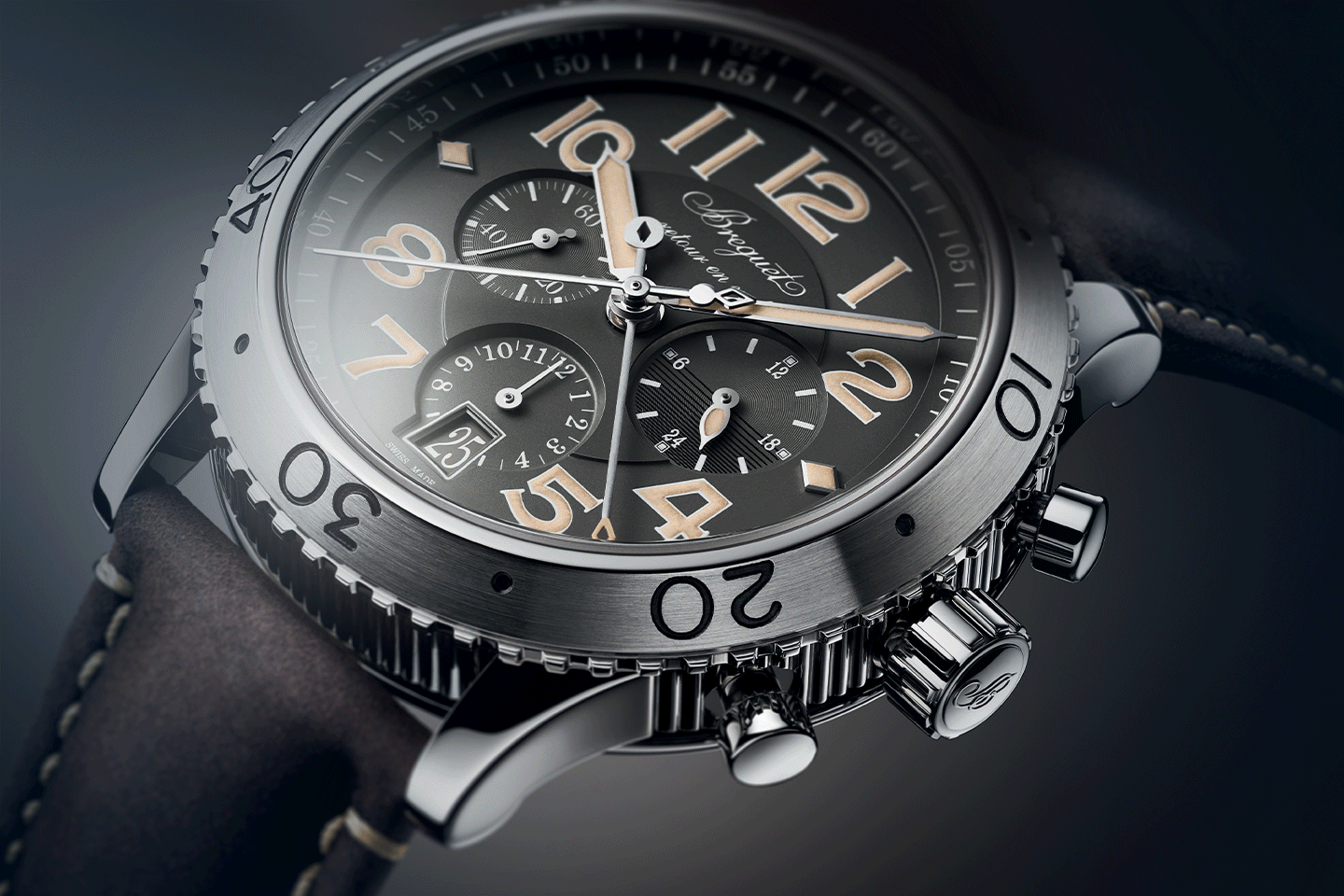
In the background (Model with this Invention): Type XXI. On the right: Chronometers with Double Observation Seconds, 1820.
Breguet created a watch that could measure conventional time while having a chronograph mechanism that could start and stop the seconds hand, and a subsidiary dial that records elapsed minutes. With this, it was possible to measure the duration of the two events taking place simultaneously.
Breguet in the 21st Century – Breguet has never stopped its innovation.
2006 saw the inclusion of silicon into the mechanical parts of the timepiece, which would significantly enhance its performance. The material is resistant to magnetic fields and corrosion, is lighter and harder than steel, requires no lubrication, and can be made into different complex shapes. Breguet integrated silicon into the spring balance, lever and the escape-wheel; with its light weight, the frequency of the mechanical chronograph could be increased to an amazing 10Hz or 72,000 beats per hour.
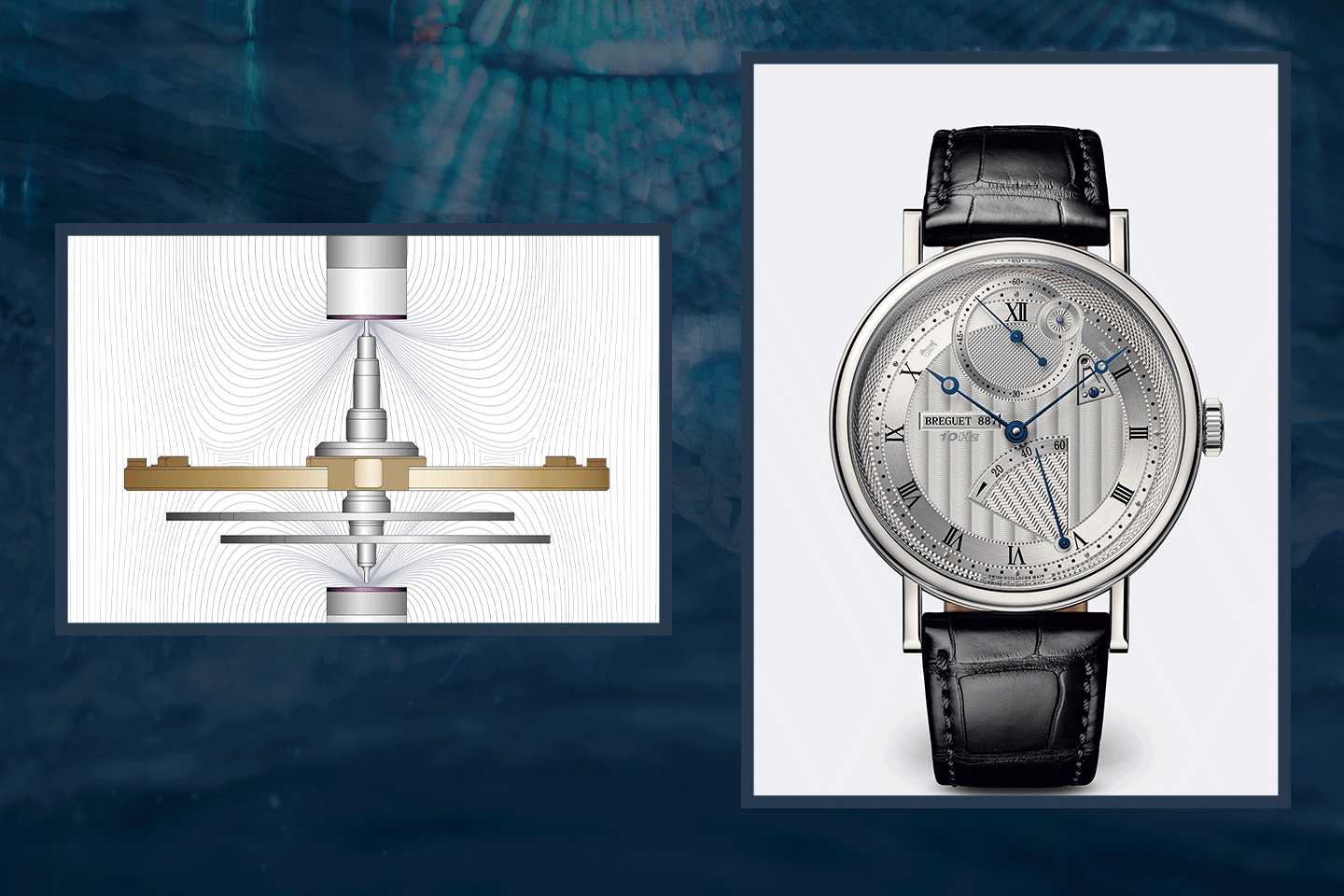
On the left: Magnetic pivot. On the right (Model with this Invention): Classique Chronométrie 7727
In 2010, Breguet introduced the Magnetic Pivot. This consists of carbon-steel balance staff with a magnet behind each end stone. One magnet is stronger than the other, in order to ensure that the balance-staff is always in contact with the end-stone on the dial side, and is always stable. If there is any displacement, movement or trauma, the magnetism force will act to shift the balance-staff back into place.
Over the past 245 years, Breguet has been at the forefront of innovative watchmaking and producing exquisite timepieces. With its distinct, classic and beautiful designs, it is no wonder that the Breguet name carries with it exceptional horological heritage and perfect patrimony.
Images courtesy of Breguet, artwork by Curatedition. All rights reserved.
Related links:
Breguet Classiques: Romancing History
Breguet: Making Waves Against Plastic Pollution
Breguet: A Seafaring Tradition

